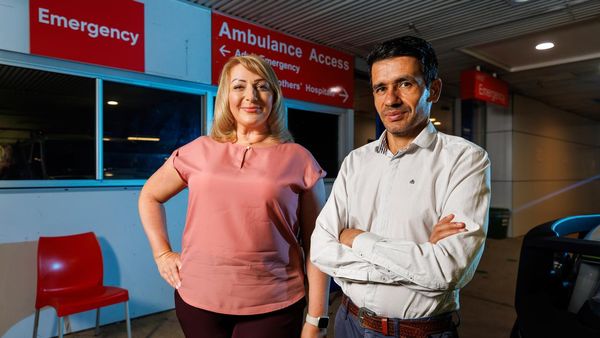
When you’re visiting your primary care physician, you may come across their physician assistant (PA) — the healthcare professional who visits you before your doctor to take your blood pressure and collect other healthcare data, listens to what ails you, and takes notes on your chart before the doctor comes in.
Although they don’t have to go to medical school as doctors do, physician assistants do undergo rigorous training, and their pay is commensurate with the work they perform.
PA jobs are almost always available; the position ranks third on career data site Indeed’s 2024 list of the 27 most in-demand jobs in healthcare.
Here’s what you need to know about what PAs do, how much they can earn each year, and how to become certified.
Related: Dental hygienist salaries: How much do they make after a 2-year degree?
What is a physician assistant & what do they do?
A physician assistant, or physician associate, is a licensed medical professional who works under the supervision of a physician.
Depending on where they work, PAs can have various roles, from collecting patient data to developing treatment plans to assisting doctors in surgical procedures. PAs have the flexibility to work in different medical specialties, including primary care, emergency care, surgery, pediatrics, and elder care.
The PA profession is relatively new compared to other healthcare professions; it was created in 1967 as a way to improve and expand access to healthcare. Duke University's medical program took the initiative to form a PA program out of its medical center in 1965, and the first PA class graduated two years later.
By the 1970s, PAs were viewed as a way to alleviate the doctor shortage, and the standards and accreditation processes for the profession were set and developed in the 1970s.

How much do physician assistants make?
A physician assistant’s pay is typically well above the average American’s salary. According to the U.S. Bureau of Labor Statistics, the median annual pay in 2023 was $130,020, or $62.51 per hour — that’s more than double the national average annual salary of $59,228.
By comparison within the medical profession, a registered nurse’s average annual pay is around 33% lower at $86,070.
PAs can make even more than $130,000 annually in large, metropolitan areas. In New York City, for example, where the cost of living is relatively high, PA salaries range from around $130,000 to $200,000 at private clinics and hospitals, according to career data site Indeed.
What are the employment prospects for physician assistants?
Physician assistants play a vital role in providing healthcare services. They help physicians meet the healthcare needs of patients, who might need a vaccine inoculation or a prescription for medication to treat an illness. As more elderly Americans retire in the coming years, more physician assistants will be needed to provide healthcare services to this aging segment of the population.
In 2024, there were approximately 178,700 PAs in the U.S., according to the National Commission on Certification of Physician Assistants (NCCPA), which is the country’s only certifying organization for PAs. Clinical practice data from 2022 showed that PAs had 500 million patient interactions.
The BLS predicted that the field will grow by 39,300 jobs to 187,300 by 2032. In addition to the PAs required to fill these new jobs, thousands of additional PAs will also be needed each year to replace those who leave the profession, move on to other roles, or simply retire.
More employment and pay:
- What does ‘entry-level’ actually mean? Job-level hierarchy explained
- Which states have the best overtime pay policies?
- American Airlines pilot salaries: How much they make after pay increase
Where are physician assistants employed?
The majority of physician assistants (52%) work with doctors in private practice, according to 2022 BLS data. The next biggest employers were hospitals, including state and private institutions. Here’s a detailed breakdown:
| Place of Work | Percentage Share |
|---|---|
Offices of physicians |
52% |
Hospitals; state, local, and private |
24% |
Outpatient care centers |
9% |
Educational services; state, local, and private |
4% |
Government |
2% |
What are the credentials necessary to become a physician assistant?
The route to becoming a physician assistant is somewhat similar to the accreditation process for a nurse in that specialized coursework and certification are required.
Undergraduate degree
First, an aspiring PA must finish their undergraduate studies, ideally in biology, pre-med, or another STEM field.
Clinical experience
Next, they must gain some clinical experience in health and medicine. Options include working as an EMT, a radiologist, a dental tech, or a military medic, among other occupations.
PA master's degree
Next, an aspiring PA must enroll in a PA master's program accredited by the Accreditation Review Commission on Education for the Physician Assistant (ARC-PA), which oversees PA education programs.
Exams and certifications
After completing the PA program, the candidate must pass the Physician Assistant National Certifying Examination (PANCE), which is administered by the NCCPA.
Next, they must get a state license to practice in the state where they wish to work. At this point, a candidate can get their first official job as a physician assistant.
Continuing education
The education of a PA never stops, though. There are continuing education courses that keep PAs up to date with the latest procedures, techniques, and use of technology.
What are the downsides of working as a physician assistant?
Work as a physician assistant can be physically and emotionally demanding. Schedules for physician assistants vary from weekdays to weekends and holidays, and some may be on call for emergencies at any time of the day or night. They also are subject to standing many hours in a day’s shift and are likely to handle many patients in a single day.
Working hands-on with patients in a medical setting can be challenging, but those who choose PA careers typically find it both lucrative and rewarding.
Related: Veteran fund manager picks favorite stocks for 2024










